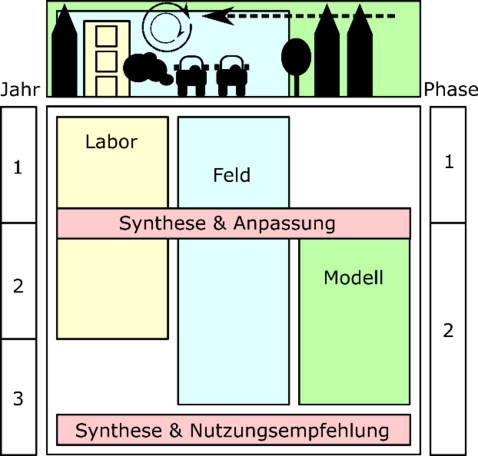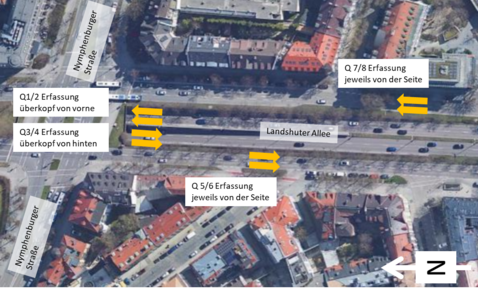REINE LUFFT - Do new air filtration systems clean up urban nitrogen dioxide?
Project Description
Pollutants in the air can affect human health. This applies in particular to nitrogen dioxide (NO2), which is additionally indicative of other air pollutants, as it is primarily produced as a product of combustion processes, e.g. by industry or traffic. In addition, NO2 can also be formed secondarily by air-chemical processes from precursor pollutants. If the air in cities is hardly exchanged due to limiting building development or topography and during stable weather conditions with little mixing, NO2 emissions can accumulate and negatively affect the health of residents in the affected urban environments.
The EU Air Quality Directive (2008/50/EC) therefore defines a maximum permissible annual mean value of 40 µg/m³ for NO2. Since 2010, this standard has been mandatory to meet, which is monitored by a network of air quality measuring stations. Despite generally decreasing NO2 concentrations in the air, however, some locations of the Bavarian Air Quality Monitoring System (LÜB) continued to exceed this limit value in recent years: in particular, Landshuter Allee in Munich. A possible technical solution that promises to improve the air quality at such heavily polluted locations and to avoid limit value violations in the future is active air purification systems that remove nitrogen dioxide from the air.
Tasks of the Chair
While the other subprojects deal with emissions and the cleaning effect of filter systems, the subproject (SP) Traffic focuses on the emissions side. Nitrogen oxides are formed as products of undesirable side reactions in combustion processes. On Landshuter Allee in the area of the test site, the exceptionally high volume of traffic (approx. 130,000 vehicles/24h) is the most significant source of NOx. Thus, in addition to meteorological influencing factors such as wind strength, wind direction and precipitation, the traffic conditions, which change on a daily basis, will represent important dynamic input variables for the interpretation of the measured emissions.
Objectives
The objective of SP Traffic is to measure and provide the influences of motor vehicle traffic on Landshuter Allee on the emission side. For this purpose, the distribution of pollutant classes in the vehicle collective is determined. Furthermore, vehicle quantities and traffic conditions are recorded during the measurement campaigns of SP Air and SP Measuring Network. Using emission factors (e.g. from the "Manual for Emission Factors of Road Traffic" - HBEFA 4.1) for the vehicle types and pollutant classes, the measured traffic volumes and the traffic quality found, the amount of NOx emitted over the day is calculated.
| Keywords | Traffic emissions, Nitrogen dioxide, air filters, air quality |
| Funding | Bavarian State Ministry of the Environment and Consumer Protection |
| Website | |
| Partners | Universität Bayreuth Universität Augsburg Ostbayerische Technische Hochschule Regensburg |
| Duration | October 2020 - September 2023 |
| Contact | Frederik Bachmann, Ulrich Glöckl |

